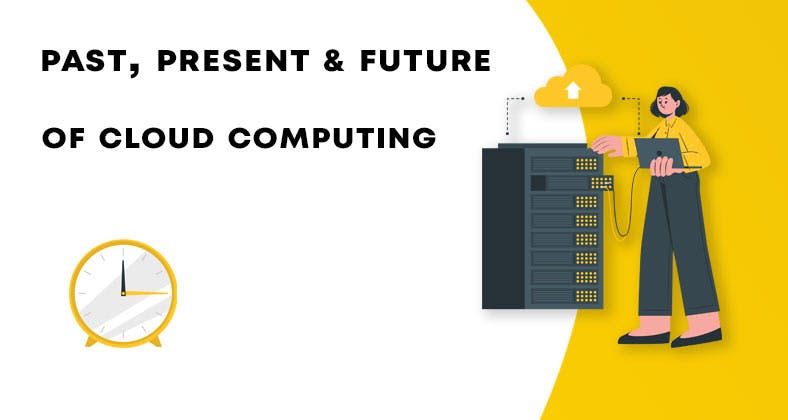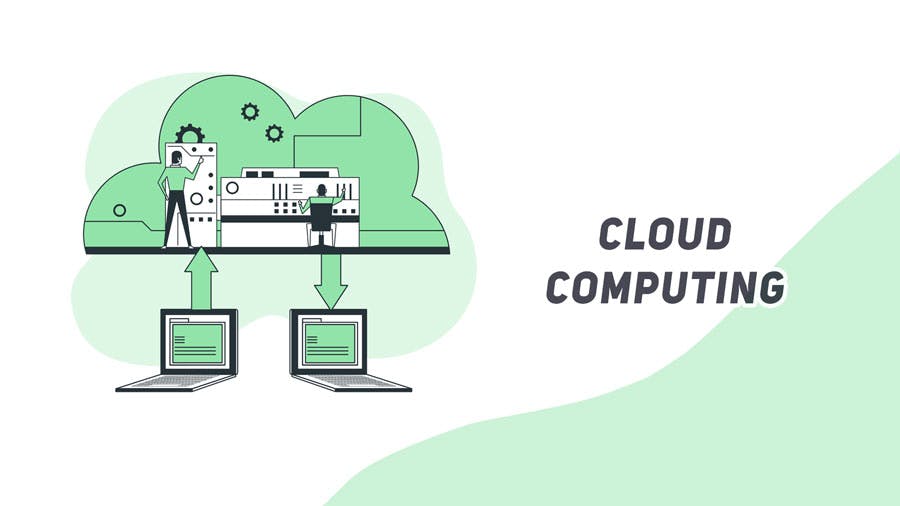The Past, Present, and Future of Cloud Computing
In order to understand better The Past, Present, and Future of Cloud Computing, you have to dive into the depth of the Cloud Computing market.
The Cloud Computing market size is expected to grow to USD 947.3 billion by the year 2026, with an astonishing Annual Growth Rate. While Cloud computing might seem to be modern technology, the Concept behind resources sharing is not new and started back in the 1950s.

History
During the late 1950s and early 1960s (opens in a new tab), businesses adopted a process called time-sharing. Back at that time, users had to break banks to access servers that took businesses online. Time-sharing enabled users to access numerous computing mainframes simultaneously, increasing the processing power and reducing downtime. Time-sharing represents the first use of shared computing resources, acting as the foundation of modern cloud computing.
The idea of virtualization was pioneered in the 1970s when multiple ‘virtual’ computers ran on a single system of ‘physical’ hardware. However, that concept did not gain prominence at the time, with the next 30 years being dominated by the use of Personal Computers.
In the 1970s and the 1980s, software companies Microsoft, Apple, and IBM developed technologies to enhance the cloud environment, bringing forth the use of cloud servers and server hosting.
It was then around 2005 when businesses all over the globe realized that it was more feasible economically to buy shared computing resources from the cloud, as it consumed less time and effort, whilst offering more capabilities at cheaper rates.
Related: MetaVerse Explained | How it works (opens in a new tab)
Amazon started with the launch of Amazon Web Services (AWS), offering services like cloud computing and cloud storage. Following the suit, other major companies in the industry, including Microsoft and Google, launched their own cloud offerings to compete with AWS.
Present day Cloud Computing:
Large-scale cloud computing in the present day is no longer a tool that is exclusive to the big players of the industry, rather, it is accessible to anyone, anywhere around the world.

Growth in the adoption of cloud-based technologies highlighted the benefits of enabling everyone in an organization to access and collaborate on resources and plan according to their changing needs and budgets.
Cloud-based applications enable people to share various files such as documents, images, and videos through the internet. Anyone with a web browser and internet connectivity can access and use these applications.
Related: Top 5 Future proof Tech skills that you can learn (opens in a new tab)
The internet is, in fact, built on the concept of cloud computing. Any user, be it an individual or a company, can access and store resources in “drives”, thereby eliminating the need for physical storage systems. Google Drive, iCloud, OneDrive are notable examples of the aforementioned cloud storage, commonly known as drives.
Cloud computing has now been established in many facets of a business, from collaborating on data to completing legal and financial transactions through a single platform. More and more companies are becoming aware that they do not have to rely on their own physical infrastructure to store data and are embracing the flexibility offered by virtual infrastructures.
Future of cloud computing:
Organizations are more likely seeking to shift their workloads to public clouds. One of the reasons for this migration is to take advantage of its elasticity and modernize internal computer systems, which, in turn, empower their critical business units.
With serverless computing, developers simply need to create a code, and the cloud provider loads and execute that code in response to real-world events. Users only pay for the number of transactions that are executed. AWS Lambda, Google Cloud Functions, and Azure Functions are examples of such server-less computing services.
Another set of emerging cloud technologies is related to Artificial Intelligence (AI) and Machine learning. These technologies provide a range of cloud-based AI and machine learning services such as Amazon Machine Learning, Google Cloud Machine Learning Engine, and Google Cloud Speech API.
Related: How does Cloud Computing Work (opens in a new tab)
In developed markets like the United States, it is already “Cloud First”. The concept of the “Cloud First” strategy has spread to the commercial sector since its adoption by the US government. Most organizations are already looking at cloud-based systems as the first option when it comes to deploying a new application or capability. We now live in a digital economy where we don’t just access information, we consume it to make decisions in real-time.
The future seems to be bright, and in the years to come, this technology will become pivotal with the swift and consistent growth of global cloud data centers.
Conclusion
This was an article on ‘The Past, Present, and Future of Cloud Computing’, written by one of our Interns at IndGeek. Hope this was informative to you and still if you’re having any queries, feel free to reach us via comments.
